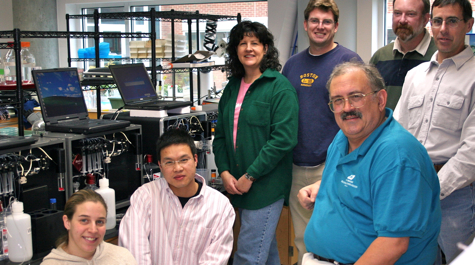Biosensors
Each time you get a flu shot or other vaccination, you benefit from your immune system’s exquisite ability to create antibodies that can recognize and bind with foreign agents—whether they ’re viruses, bacteria, or toxins.
VIMS researcher Mike Unger is now tapping the immune system’s power—and the latest advances in electronic instruments—to address pressing issues in marine science. He carries on work that he pioneered at VIMS with the late professor Steve Kaatari.
Unger and graduate students and technicians in his lab are combining specially designed antibodies with digital instruments to create so-called “biosensors” that hold promise for detecting and tracking oil spills, monitoring harmful algal blooms, identifying toxins, and other, perhaps yet unrecognized, applications—all in real time.
The ultimate goal is to place the sensors on different platforms to sense the introduction and dispersal of aquatic contaminants. Those platforms include marine buoys, robotic submarines, and in the near future, a Buck-Rogers-like device small enough to clip on a researcher’s belt.
Unger is an environmental chemist who analyzes samples using today’s most high-tech instruments—mass spectrometers and gas chromatographs. He jokes that by working on the new sensors “ I threaten to put myself out of business.”
Using today's technology, says Unger, is both time-consuming and expensive. “For every hour I spend in the field collecting samples, I have to spend another 100 hours in the lab. There are multiple steps; it can literally take weeks to get one data point—at up to $1,000 per sample.”
With biosensors, Unger says “We’re looking at a new era, where there’s a possibility of achieving fast, cheap environmental data.

